Sometimes hard turning is the best way to finish a hardened steel workpiece.
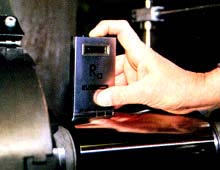
Surface finishes of 12µin. or better can be achieved on hardened steels via hard turning.
The toughest thing about producing a part from a heat-treated, machined steel harder than Rc 55 is the finishing process. Typically, casting, forging, and rough machining are performed before the part is heat-treated. Only finishing is performed on the steel in its hardened state. Finish grinding is the typical process employed, but in many cases hard turning is a better option for internal and external finishing. Finish hard turning heat-treated steel, employing either a ceramic or a PCBN insert, usually involves DOCs up to 0.020" (0.5mm) and feeds up to 0.008" (0.2mm).
Putting hard turning into practice can be a challenge, not only for production-process planning engineers, but also for suppliers of machine tools, workholders, toolholders, and cutting tools. This is due to the fact that hard turning is a relatively new concept, and it forces one to work closer to the limits of the machine and tool with less room for error.
To successfully implement a hard-turning application, the end user often must rethink his process and tolerance requirements further upstream of the finishing process. He may have to tighten up dimensional and metallurgical tolerances on incoming parts to make the process cost-effective. PCBN, the most common tool choice for the hard turning of steels, is more expensive than conventional tooling. If the finishing process is set up to operate at 0.005" (0.125mm) DOC, and the incoming parts are inconsistent to the point where DOC varies from 0.004" to 0.014" (0.10mm to 0.35mm), PCBN tool life may suffer and tool costs will outweigh hard turning’s advantages. If, however, incoming part geometries are consistent, tool life will be long and reliable, and going with PCBN inserts will pay off.
Where applicable, hard turning can offer considerable benefits for both mass-production and small-volume job shop operations, including lower machine tool investment requirements (because less complex, less expensive machines are sufficient for turning), shorter cycle times, recyclable chips, no coolant requirement, and easier and faster setup time.
To choose between hard turning and grinding, one must consider several variables, including surface-finish and surface-integrity requirements, the aspect ratio of the material section to be removed, the complexity of the form, the frequency of changeover between part types in production, and tolerance requirements.
Hard Turning or Grinding?
When considering whether or not to implement hard turning as a finishing operation for hardened steels, one must benchmark it against its alternative, that is, traditional grinding techniques. The purpose here is not to denigrate grinding as a process, but simply to determine for which applications hard turning is the more effective alternative. Following are the factors to consider.
Surface finish. It is feasible to obtain surface finishes as low as 12µin. (0.3µm) in a hard-turning operation for as long as the cutting tip is in good condition. How long a PCBN cutting tip lasts depends on the operation’s requirements and parameters. Worn PCBN tools require special grinding machines to regrind them, so the user normally must send them back to the manufacturer for resharpening.
Grinding and turning produce different surface topographies, regardless of the surface-finish value. This can be advantageous for one or the other process depending on the function of the surface in question. In some cases, a rougher but metallurgically undamaged hard-turned surface hastens lapping or polishing operations. In other cases, when a smoother finish is called for, the helical nature of a hard-turned surface may be a detriment.
Surface integrity. Generally, hard turning is more apt to maintain a part’s surface integrity than conventional grinding. If a part’s performance depends on its metallurgical integrity, that integrity should be verified whether hard turning or grinding is performed.
Heat degrades the metallurgical properties of a steel workpiece surface. Hard turning is inherently more efficient at removing a specific volume of material while consuming, typically, five times less energy than conventional grinding. The larger chips, cleaner cutting action, and lower level of friction produce less initial heat. In hard turning, the largest proportion of heat is evacuated into the chips. A well-controlled hard-turning operation will rarely cause thermal damage to the part surface. The key is to keep it well-controlled—a blunt or damaged cutting tool or incorrect cutting geometry can generate excess heat and damage the part severely.
Metal-removal efficiency. Hard turning performed at large DOCs and high workpiece speeds permits potentially higher metal-removal rates (mrr) in hardened steels than can be achieved with grinding. Users frequently report tripled or quadrupled mrr. But such increases can’t always be achieved.
The real advantage hard turning has over grinding is found when finishing machined sections with a certain maximum aspect ratio of cut width vs. DOC. Beyond this maximum, hard turning is no longer competitive against a plunge-grinding operation in terms of cycle time. The complexity of the part and the operations to be performed on the part determine this threshold. For example, consider a cylindrical part 4" (100mm) dia. by 12" (300mm) long. To impart a groove 3/8" (10mm) wide by 0.050" (1.25mm) deep, single-point plunge cutting would be the most efficient alternative. If this same part needed a groove 1 1/2" (38mm) wide by 0.050" (1.25mm) deep, the single-point turning tool would have to be traversed. A 1 1/2"-wide tool could not be used, because it would have too high a tool pressure to perform a straight plunge cut. In this case, a 1 1/2"-wide grinding wheel, straight-plunged, would be the best alternative. But when the width of the cut is too great even for plunge grinding, turning may, again, be the better choice. To remove 0.050" from the radius of the entire length of the part, for example, four or five passes with a single-point tool would be more efficient than 20 to 50 passes of a wheel in a traverse-grinding operation.
Interrupted cuts. Interruptions in any machining operation place additional constraints on any process. Hard turning can deal with interruptions, but there is invariably a price to pay in terms of tool life due to a combination of mechanical and thermal shocks applied to the cutting tool. In addition, the single-point cutting action in interrupted cuts generates a more specific excitation amplitude into the system than grinding does. Consequently, the machine tool, as well as the tooling and part setup, must be very rigid and damped for good results.
Coolant. Hard turning can be performed without coolant in most cases. In fact, applying coolant can have a negative impact on tool life and surface finish. It is believed that hard turning makes chips through induced heat softening of material in the chip shear zone. Over-efficient cooling can diminish this phenomenon to the point where cutting forces, and thus mechanical attritious wear, increase, shortening tool life.
In-Depth Testing
Tests conducted by GE Superabrasives revealed the influences different DOCs have on tool wear and surface finish in a hard-turning operation performed with an SNG-433 PCBN insert having a 15" x 0.008" chamfer on AISI 4340 steel heat-treated to Rc 52.
Figures A and B indicate the impact of changing DOC in a continuous cutting operation. Under these conditions, the optimum DOC appears to be around 0.075" (1.9mm). At this DOC, the same amount of steel is removed in about 65% of the time taken with a DOC of 0.050" (1.3mm) without a significant penalty in surface finish. In this test, the steel has not been heat-treated to a particularly hard state, which explains the higher-than-normal DOCs permitted.
Figures C and D illustrate the difference in tool life obtained performing an interrupted cut with the same PCBN tool geometry on the same steel. To maintain an acceptable tool life, the DOC must be reduced. While maximum mrr is achieved at the highest DOCs, there is a significant loss of surface finish. And remember, a hard-turning finishing operation is normally performed in a single pass at a maximum DOC of 0.020" (0.5mm). The actual DOC is less relevant than the surface finish achieved. A more practical productivity index to compare different sets of hard-turning parameters would incorporate a “surface-finishing rate.”
Similarly, when hard turning an interrupted cut, the thermal cycling experienced by the cutting tool is exaggerated by the presence of coolant and can lead to thermal fatigue and premature failure of the insert material.
Where found to be beneficial to tool life or to flushing chips, coolant used in hard-turning operations is less costly to maintain and, ultimately, to dispose of than coolant used in a conventional grinding process. Filtering out the larger chips generated in hard turning is easier than filtering grinding swarf.
Process flexibility. One of the recent trends in manufacturing, both for subcontract work and mass production, has been the increasing demand for the quick delivery of small numbers of parts. JIT is now a firmly rooted industrial philosophy.
Turning is an inherently flexible process. Setups are relatively quick, and it’s easy to change processes between two different parts in a modern CNC lathe equipped with a multitool carousel. Hard turning is ideally suited for such production conditions.
Often, grinding can be a bottleneck in a process, especially for smaller shops that don’t have their own grinding machines. These shops must subcontract their finishing operations. A closer analysis of the capabilities of the in-house machining facilities may reveal that hard turning is a viable option and thereby eliminate the need to resort to outside services with the inherently negative impact on lead times and overall costs.
It’s important to evaluate the process on a total cost and capacity basis and not just on tool cost per part or machining-cycle time per part.
Tolerances. Customers, particularly in the automotive industry, are demanding tighter tolerances and greater consistency than ever before. The flexibility of the turning process can contribute to improved part quality and process capability by allowing the machining of complex parts with a single chucking per part. The traditional methods for improving precision and accuracy involve using either a multispindle grinding machine or more than one grinder, each dedicated to specific operations. These solutions share a key disadvantage: high investment costs. The latter alternative compounds the problem by requiring extra operators for surveillance and maintenance, plus extra floor space. In addition, moving parts between machines invariably leads to longer overall lead times, with the additional burden of extra work in progress and the impact that this has on inventory and the company’s cash flow.
When the need to purchase new equipment arises, the geometric tolerances and surface-finish requirements of the parts to be produced determine whether to specify a lathe for hard turning or a grinding machine. Hard turning can achieve tolerances of less than 0.00050" (0.013mm) and finishes as low as 12µin. (0.3µm) Ra, though the surface finish has the helical characteristic of a turned surface. Grinding can hold tolerances of 0.000050" (1µm) and surface finishes below 10µin. (0.25µm) Ra. But, compared to hard turning, grinding is an expensive and time-consuming process.
There are many grinding processes in operation today that don’t require the tolerances and surface finishes that grinding can provide. In these instances, hard turning is a viable and usually less costly alternative.
Although a standard lathe is not normally designed to achieve the dimensional tolerances a grinding machine can meet, a hard-turning operation on a standard CNC lathe can achieve dimensional tolerances of about 0.00040" (10µm) over a reasonably long, unattended production run. A good grinder, depending on the operational mode and the material being ground, can achieve tolerances of 0.00004" (1µm). But keep in mind that hard turning can achieve its tolerances without operator intervention, while the production of ground profiles may require frequent wheel-truing to maintain tolerance.
To systematically achieve dimensional tolerance requirements below 0.00040" via hard turning, one must pay special attention to lathe specifications in terms of rigidity, guideways, and CNC feed accuracy and smoothness.
For shops with grinders, an alternative way to meet tight tolerances is to combine hard turning with grinding, reserving the latter for fine semifinishing operations. This strategy reduces the amount of stock to be removed by grinding. The grinding time saved may more than compensate for the extra time taken by a supplementary operation.
Machine investment. Once the technical factors have been considered, it’s possible to estimate the required investment in machine tools for either hard turning or grinding. In the case of simple forms and long production runs, such straight comparisons may be appropriate. But more complex machining operations require an in-depth study to make a true evaluation of the company’s machine tool needs. Such a study should include overall process capabilities and capacities.
The study should also factor in cutting tool costs without overemphasizing them. Most cost models indicate that the cutting tool cost per part is typically two to three times higher for hard turning than for conventional grinding, because hard turning requires superabrasive tools. The same cost models also indicate that cutting tools are only a small element of the total cost for either process. But tool cost per part is the most easily quantified measurement on the shop floor, and therefore it often gets undue emphasis in figuring overall costs. What isn’t always taken into account is some of the cost advantages turning has over grinding, including the lower cost of a lathe compared to a grinder; lower maintenance costs; no costs for coolant, coolant-system maintenance, or coolant disposal; and cycle times that can be five to 10 times faster than grinding. Over time, hard turning can save hundreds of thousands of dollars per machine compared to conventional grinding, provided it can produce acceptable quality.
For job shops and small-batch subcontractors, hard turning does not require exceptional equipment. These firms can obtain excellent results on rigid, standard CNC lathes in good condition. Manufacturers of high-volume, high-precision parts, however, will need machines that exhibit superior rigidity, positioning accuracy, and repeatability.
Parameters for Success
Should an analysis of the above factors lead to the conclusion that hard turning is the best alternative, it’s worthwhile to clearly define the objectives of the process before introducing hard turning to the shop floor. For example, minimizing tool cost while improving productivity and minimizing machine investment, though worthy aims, are rarely compatible within the same set of parameters. Once one defines priorities, he can turn his attention to the following parameters.
Tool material. Cutting tool suppliers offer hard-turning inserts made from either ceramic-base materials, such as Si3N4, or PCBN compositions.
Ceramic-base materials cost less than PCBN. They possess excellent thermal and chemical stability, but they lack PCBN’s toughness and hardness. Workpieces softer than Rc 45 tend to produce long, stringy chips that propagate crater wear on the PCBN tool, shortening its life to the point where it is no longer cost- effective compared to conventional tooling. For these softer workpieces, ceramic is the better tool-material choice. However, in most hard-turning applications the workpiece is harder than RC 45. For these materials, PCBN is the preferred choice, especially for operations in which unmanned operation and high precision are priorities.
PCBN cutting tools are available in a variety of compositions. The principle differences between compositions are the relative CBN content and the choice of secondary-phase binder material, which is usually a ceramic. Generally, the higher-CBN-content PCBN tool materials have effective crystal-to-crystal bonding, which enhances mechanical strength and impact resistance. The lower-CBN-content materials typically contain 60% to 70% CBN sintered at high pressure in a secondary-phase ceramic matrix. Such compositions exhibit greater thermochemical wear resistance than high-CBN-content inserts.
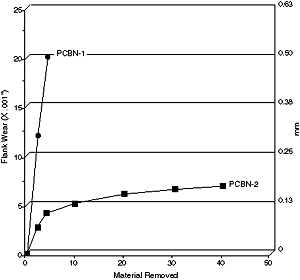
Workpiece: V-notched 4340 Steel (RC 55)
Cutting Speed: 360 fpm (109 m/min)
Feed Rate: 0.005 ipr (0.13 mm/rev)
DOC: 0.020" DOC (0.5 mm)
Coolant: Trim EP (20%)
Insert Geometry: SNG 323
Edge Prep: 15" x 0.008" (0.2 mm) chamfer w/ 0.0005" (0.013mm) hone
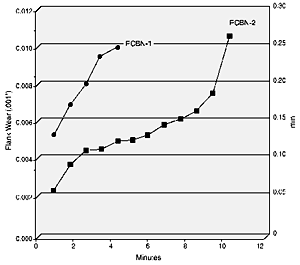
Figure 1: The influence of PCBN material types in continuous (A) and interrupted (B) turning operations.
Workpiece fixturing. A conventional grinding operation invariably puts higher overall force on the part, whereas in hard turning pressure is applied mainly at the specific point of tool/workpiece contact. These differences must be considered when setting up a hard-turning operation. If the part has thin sections, special fixturing may be needed to give the part extra rigidity, or the cutting tool geometry may have to be redefined to minimize or redirect cutting forces.
Figures 1A and 1B show the influence of using two different PCBN cutting tool materials, PCBN 1 (90% CBN) and PCBN 2 (65% CBN), in both continuous and interrupted cutting. Note that the relative difference between PCBN 1 and PCBN 2 performance is reduced in interrupted cuts. Although test conditions in Figure 7A and B indicate PCBN 2 to be the superior performer, under more severe conditions, PCBN 1 will win out (Figure 2).
As illustrated in Figure 2, the workpiece and the operations to be performed on it influence the user’s choice between a high-CBN or a low-CBN insert. Some trial and error may be necessary if the operations entail a combination of interruptions and DOCs ranging between 0.020" and 0.040" (0.5mm and 1.0mm).
Tool geometry and preparation.When choosing an insert geometry, the goal is to find the shape that provides as much toughness as possible within the geometrical constraints of the workpiece profile to be machined. An 80 1/2 diamond-shaped insert is stronger than a 55 1/2 diamond-shaped insert. The nose radii on such forms are usually about 0.03" to 0.05" (0.8mm to 1.2 mm) for finishing. The larger the radius, the better the surface finish obtainable. However, larger radii also lead to higher cutting forces and a greater chance of chatter occurring. If the rigidity of the machine, tool, and workpiece fixturing are all sufficient, a round button insert will provide the best compromise between surface finish and productivity.
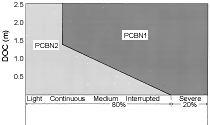
Figure 2: Choosing between PCBN 1 and PCBN 2 depends, in part, on the nature of the cut.
PCBN inserts tend to be both harder and more brittle than their carbide counterparts. Therefore, it is usually necessary to protect the cutting edge with a chamfer and, in some cases, a light hone. Figure 3 offers broad guidelines for the chamfer to be applied. These guidelines leave room for further optimization.
Where applicable, it is worthwhile to experiment with a process in which both rough and finish machining are performed on a through-heat-treated bar or tube stock in a single clamping. The advantages in lead time, cycle time, and inventory management may outweigh the extra cost of the shortened life of tools used to rough the hardened steel.
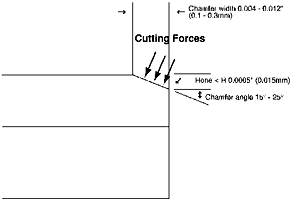
Figure 3: Suggested edge protection of PCBN inserts.
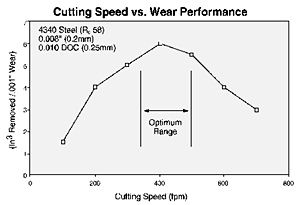
Figure 4: The influence of cutting speed on PCBN tool performance.
Cutting parameters. Acceptable speeds for finish hard turning range between 250 fpm and 650 fpm (80m/min. and 200m/min.), though typically speeds are relegated to a range between 325 fpm and 500 fpm (100m/min. and 150m/min.). The greater the load on the cutting edge, the lower the cutting speed should be. To turn parts with high hardness, large DOC, or severe interruptions, the speeds should stay between 250 fpm and 325 fpm (80m/min. and 100m/min.). For extreme cases, speeds should be kept even lower. Figure 4 illustrates the influence of cutting speed on tool performance for a given set of parameters.
DOCs usually range from 0.004" to 0.012" (0.1mm to 0.3mm), but they can run deeper. To obtain fine surface finishes, the most common inclination is to use a very light DOC. This may be feasible, but it doesn’t necessarily deliver the expected benefits. If the DOC is too shallow, the insert will rub the workpiece surface rather than cut it.
Feed rates usually vary from 0.002 to 0.010 ipr (0.05mm/rev. to 0.25mm/rev.), depending on surface-finish and productivity requirements.
Within the constraints of the typically obtainable surface finishes of 12µin. to 25µin. (0.3µm to 0.6µm) Ra, hard turning offers an economically viable complement to grinding for the finishing of hardened parts. It is a technique that does require some preparation and insight to optimize its potential, but most current practitioners would testify that the rewards are worth the effort.
About the Author
Alan Carius is manager, industrial programs, with GE Superabrasives, Worthington, OH. Peter Rigby is manager, marketing development - France and U.K., with GE Superabrasives. This article is based on a paper originally presented at the Institute of Grinding Technology Annual Seminar, "Advances in Grinding Technology," held February 15, 1995, in Bristol, U.K.
Related Glossary Terms
- chatter
chatter
Condition of vibration involving the machine, workpiece and cutting tool. Once this condition arises, it is often self-sustaining until the problem is corrected. Chatter can be identified when lines or grooves appear at regular intervals in the workpiece. These lines or grooves are caused by the teeth of the cutter as they vibrate in and out of the workpiece and their spacing depends on the frequency of vibration.
- computer numerical control ( CNC)
computer numerical control ( CNC)
Microprocessor-based controller dedicated to a machine tool that permits the creation or modification of parts. Programmed numerical control activates the machine’s servos and spindle drives and controls the various machining operations. See DNC, direct numerical control; NC, numerical control.
- coolant
coolant
Fluid that reduces temperature buildup at the tool/workpiece interface during machining. Normally takes the form of a liquid such as soluble or chemical mixtures (semisynthetic, synthetic) but can be pressurized air or other gas. Because of water’s ability to absorb great quantities of heat, it is widely used as a coolant and vehicle for various cutting compounds, with the water-to-compound ratio varying with the machining task. See cutting fluid; semisynthetic cutting fluid; soluble-oil cutting fluid; synthetic cutting fluid.
- cubic boron nitride ( CBN)
cubic boron nitride ( CBN)
Crystal manufactured from boron nitride under high pressure and temperature. Used to cut hard-to-machine ferrous and nickel-base materials up to 70 HRC. Second hardest material after diamond. See superabrasive tools.
- cutting speed
cutting speed
Tangential velocity on the surface of the tool or workpiece at the cutting interface. The formula for cutting speed (sfm) is tool diameter 5 0.26 5 spindle speed (rpm). The formula for feed per tooth (fpt) is table feed (ipm)/number of flutes/spindle speed (rpm). The formula for spindle speed (rpm) is cutting speed (sfm) 5 3.82/tool diameter. The formula for table feed (ipm) is feed per tooth (ftp) 5 number of tool flutes 5 spindle speed (rpm).
- cutting tool materials
cutting tool materials
Cutting tool materials include cemented carbides, ceramics, cermets, polycrystalline diamond, polycrystalline cubic boron nitride, some grades of tool steels and high-speed steels. See HSS, high-speed steels; PCBN, polycrystalline cubic boron nitride; PCD, polycrystalline diamond.
- extreme pressure additives ( EP)
extreme pressure additives ( EP)
Cutting-fluid additives (chlorine, sulfur or phosphorus compounds) that chemically react with the workpiece material to minimize chipwelding. Good for high-speed machining. See cutting fluid.
- fatigue
fatigue
Phenomenon leading to fracture under repeated or fluctuating stresses having a maximum value less than the tensile strength of the material. Fatigue fractures are progressive, beginning as minute cracks that grow under the action of the fluctuating stress.
- feed
feed
Rate of change of position of the tool as a whole, relative to the workpiece while cutting.
- grinding
grinding
Machining operation in which material is removed from the workpiece by a powered abrasive wheel, stone, belt, paste, sheet, compound, slurry, etc. Takes various forms: surface grinding (creates flat and/or squared surfaces); cylindrical grinding (for external cylindrical and tapered shapes, fillets, undercuts, etc.); centerless grinding; chamfering; thread and form grinding; tool and cutter grinding; offhand grinding; lapping and polishing (grinding with extremely fine grits to create ultrasmooth surfaces); honing; and disc grinding.
- grinding machine
grinding machine
Powers a grinding wheel or other abrasive tool for the purpose of removing metal and finishing workpieces to close tolerances. Provides smooth, square, parallel and accurate workpiece surfaces. When ultrasmooth surfaces and finishes on the order of microns are required, lapping and honing machines (precision grinders that run abrasives with extremely fine, uniform grits) are used. In its “finishing” role, the grinder is perhaps the most widely used machine tool. Various styles are available: bench and pedestal grinders for sharpening lathe bits and drills; surface grinders for producing square, parallel, smooth and accurate parts; cylindrical and centerless grinders; center-hole grinders; form grinders; facemill and endmill grinders; gear-cutting grinders; jig grinders; abrasive belt (backstand, swing-frame, belt-roll) grinders; tool and cutter grinders for sharpening and resharpening cutting tools; carbide grinders; hand-held die grinders; and abrasive cutoff saws.
- grinding wheel
grinding wheel
Wheel formed from abrasive material mixed in a suitable matrix. Takes a variety of shapes but falls into two basic categories: one that cuts on its periphery, as in reciprocating grinding, and one that cuts on its side or face, as in tool and cutter grinding.
- hard turning
hard turning
Single-point cutting of a workpiece that has a hardness value higher than 45 HRC.
- hardness
hardness
Hardness is a measure of the resistance of a material to surface indentation or abrasion. There is no absolute scale for hardness. In order to express hardness quantitatively, each type of test has its own scale, which defines hardness. Indentation hardness obtained through static methods is measured by Brinell, Rockwell, Vickers and Knoop tests. Hardness without indentation is measured by a dynamic method, known as the Scleroscope test.
- interrupted cut
interrupted cut
Cutting tool repeatedly enters and exits the work. Subjects tool to shock loading, making tool toughness, impact strength and flexibility vital. Closely associated with milling operations. See shock loading.
- just-in-time ( JIT)
just-in-time ( JIT)
Philosophy based on identifying, then removing, impediments to productivity. Applies to machining processes, inventory control, rejects, changeover time and other elements affecting production.
- lapping
lapping
Finishing operation in which a loose, fine-grain abrasive in a liquid medium abrades material. Extremely accurate process that corrects minor shape imperfections, refines surface finishes and produces a close fit between mating surfaces.
- lathe
lathe
Turning machine capable of sawing, milling, grinding, gear-cutting, drilling, reaming, boring, threading, facing, chamfering, grooving, knurling, spinning, parting, necking, taper-cutting, and cam- and eccentric-cutting, as well as step- and straight-turning. Comes in a variety of forms, ranging from manual to semiautomatic to fully automatic, with major types being engine lathes, turning and contouring lathes, turret lathes and numerical-control lathes. The engine lathe consists of a headstock and spindle, tailstock, bed, carriage (complete with apron) and cross slides. Features include gear- (speed) and feed-selector levers, toolpost, compound rest, lead screw and reversing lead screw, threading dial and rapid-traverse lever. Special lathe types include through-the-spindle, camshaft and crankshaft, brake drum and rotor, spinning and gun-barrel machines. Toolroom and bench lathes are used for precision work; the former for tool-and-die work and similar tasks, the latter for small workpieces (instruments, watches), normally without a power feed. Models are typically designated according to their “swing,” or the largest-diameter workpiece that can be rotated; bed length, or the distance between centers; and horsepower generated. See turning machine.
- metalcutting ( material cutting)
metalcutting ( material cutting)
Any machining process used to part metal or other material or give a workpiece a new configuration. Conventionally applies to machining operations in which a cutting tool mechanically removes material in the form of chips; applies to any process in which metal or material is removed to create new shapes. See metalforming.
- polishing
polishing
Abrasive process that improves surface finish and blends contours. Abrasive particles attached to a flexible backing abrade the workpiece.
- polycrystalline cubic boron nitride ( PCBN)
polycrystalline cubic boron nitride ( PCBN)
Cutting tool material consisting of polycrystalline cubic boron nitride with a metallic or ceramic binder. PCBN is available either as a tip brazed to a carbide insert carrier or as a solid insert. Primarily used for cutting hardened ferrous alloys.
- superabrasive tools
superabrasive tools
Abrasive tools made from diamond or cubic boron nitride, the hardest materials known. See CBN, cubic boron nitride; diamond; PCD, polycrystalline diamond; single-crystal diamond.
- surface grinding
surface grinding
Machining of a flat, angled or contoured surface by passing a workpiece beneath a grinding wheel in a plane parallel to the grinding wheel spindle. See grinding.
- swarf
swarf
Metal fines and grinding wheel particles generated during grinding.
- tolerance
tolerance
Minimum and maximum amount a workpiece dimension is allowed to vary from a set standard and still be acceptable.
- turning
turning
Workpiece is held in a chuck, mounted on a face plate or secured between centers and rotated while a cutting tool, normally a single-point tool, is fed into it along its periphery or across its end or face. Takes the form of straight turning (cutting along the periphery of the workpiece); taper turning (creating a taper); step turning (turning different-size diameters on the same work); chamfering (beveling an edge or shoulder); facing (cutting on an end); turning threads (usually external but can be internal); roughing (high-volume metal removal); and finishing (final light cuts). Performed on lathes, turning centers, chucking machines, automatic screw machines and similar machines.
- wear resistance
wear resistance
Ability of the tool to withstand stresses that cause it to wear during cutting; an attribute linked to alloy composition, base material, thermal conditions, type of tooling and operation and other variables.
